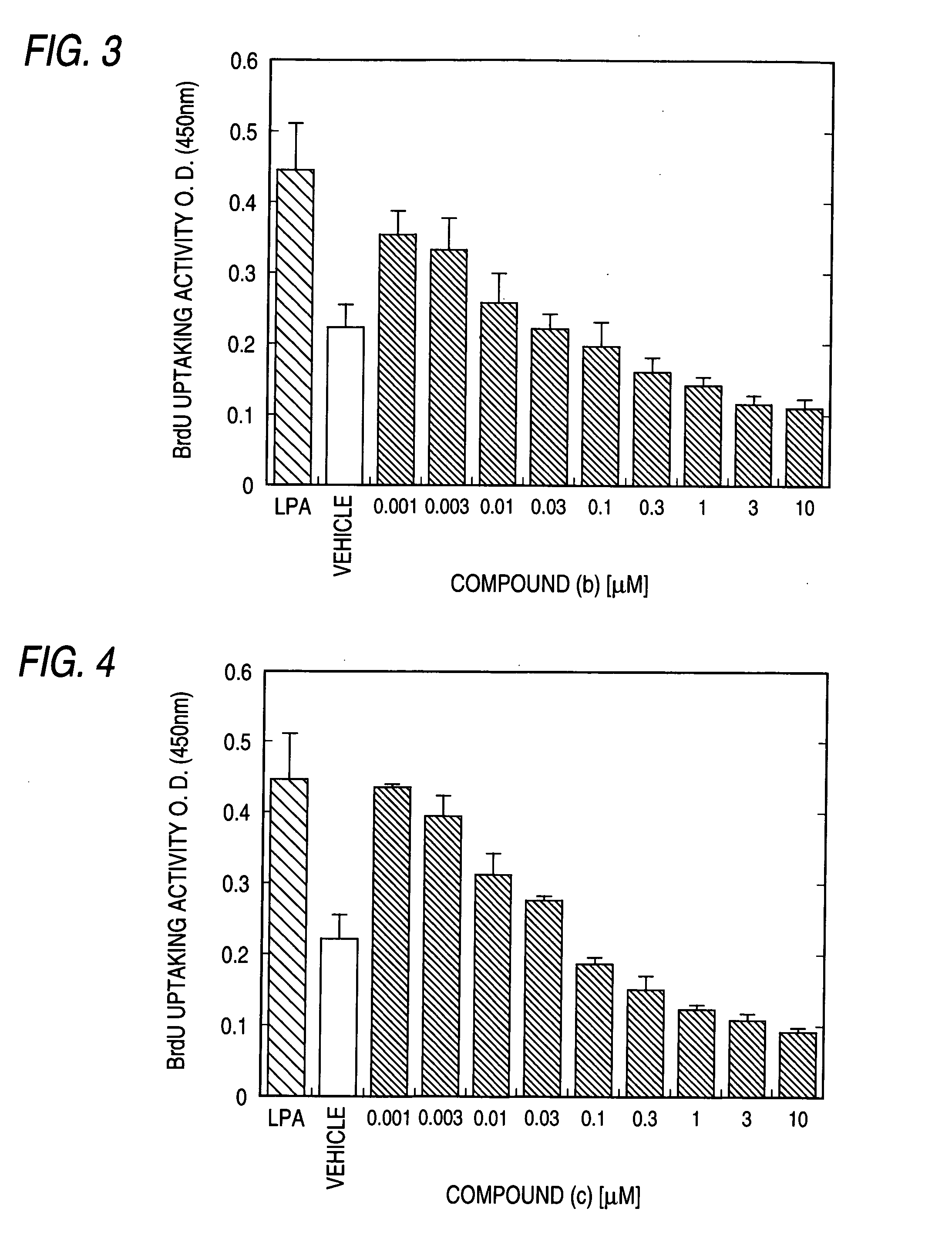Remedy for chronic disease
a technology of endothelial differentiation and chronic disease, applied in the direction of drug composition, peptides, metabolic disorders, etc., can solve the problems of not being able to easily and directly associate, not expected to achieve the same result, etc., and achieve the effect of effective treatment and/or prevention
- Summary
- Abstract
- Description
- Claims
- Application Information
AI Technical Summary
Benefits of technology
Problems solved by technology
Method used
Image
Examples
reference example 1
[0433] 3-(2-(4-ethoxyphenyl)ethyl)aminopropanoic acidethyl ester hydrochloride
[0434] 4-ethoxyphenethylamine (2.2 g) and ethyl acrylate (1.5 g) were dissolved in ethanol (25 ml) and the mixture was stirred for 3 days at room temperature. Ethanol was evaporated under reduced pressure and thus given residue was added 4N hydrochloric acid-ethyl acetate. Under reduced pressure the solvent was evaporated and thus given residue was washed with diisopropyl ether to give the title compound (4.0 g) having the following physical data.
[0435] TLC:Rf 0.89 (chloroform: methanol=9:1);
[0436] NMR (DMSO-d6): δ 9.10 (brs, 2H), 7.16 (d, J=8.7 Hz, 2H), 6.87 (d, J=8.7Hz, 2H), 4.11 (q, J=7.2 Hz, 2H), 3.99 (q, J=7.2 Hz, 2H), 3.40-3.00 (m, 4H), 3.00-2.85 (m, 2H), 2.79 (t, J=7.5 Hz, 2H), 1.31.(t, J=7.2 Hz, 3H), 1.21 (t, J=7.2Hz, 3H).
reference example 2
[0437] 3-(N-((2-(2-carboxyphenyl)phenyl)carbonyl)-N-(2-(4-ethoxyphenyl)ethyl)amino)propanoic acidethyl ester
[0438] The compound prepared in reference example 1 (600 mg), diphenic anhydride (538 mg) and triethylamine (0.85 ml) were dissolved in methylene chloride (10 ml) and the mixture was stirred overnight at room temperature. The reaction mixture was poured into a mixture of ethyl acetate and 1N hydrochloric acid, and the aqueous layer was extracted with ethyl acetate. The combined organic layer was washed with a saturated aqueous solution of sodium bicarbonate and brine successively and dried over anhydrous sodium sulfate. The solvent was evaporated to give the title compound (837 mg) having the following physical data.
[0439] TLC:Rf 0.50 (chloroform:methanol=9:1);
[0440] NMR (DMSO-d6): δ 7.90-7.15 (m, 8H), 7.00-6.70 (m, 4H), 4.00-3.90 (m, 4H), 3.80-3.00 (m, 4H), 2.60-2.00 (m, 4H), 1.35-1.05 (m, 6H).
preparation example 1
[0441] 3-(N-((2-(2-((pyridin-3-ylmethylamino)carbonyl)phenyl)phenyl)carbonyl)-N-(2-(4-ethoxyphenyl)ethyl)amino)propanoic acid ethyl ester
[0442] The compound prepared in reference example 2 (150 mg), 3-picolylamine (50 mg) and 1-ethyl-3-[3-(dimethylamino)propyl]carbodiimide hydrochloride (180 mg) were dissolved in methylene chloride (5 ml) and the mixture was stirred overnight at room temperature. The reaction mixture was poured into a mixture of ethyl acetate and 1N hydrochloric acid and the aqueous layer was extracted with ethyl acetate. Combined organic layer was washed with brine and dried over anhydrous magnesium sulfate. The solvent was evaporated and the residue was purified by column chromatography on silica gel (chloroform:ethyl acetate=1:2) to give the compound (147 mg) having the following physical data.
[0443] TLC:Rf 0.20 (chloroform:ethyl acetate=3:2);
[0444] NMR (DMSO-d6): δ 9.00-8.10 (m, 21), 7.60-6.75 (m, 17H), 4.40-3.90 (m, 4H), 3.80-3.10 (m, 4H), 2.80-2.05 (m, 4H),...
PUM
 Login to View More
Login to View More Abstract
Description
Claims
Application Information
 Login to View More
Login to View More - R&D
- Intellectual Property
- Life Sciences
- Materials
- Tech Scout
- Unparalleled Data Quality
- Higher Quality Content
- 60% Fewer Hallucinations
Browse by: Latest US Patents, China's latest patents, Technical Efficacy Thesaurus, Application Domain, Technology Topic, Popular Technical Reports.
© 2025 PatSnap. All rights reserved.Legal|Privacy policy|Modern Slavery Act Transparency Statement|Sitemap|About US| Contact US: help@patsnap.com



